2018-03-15 - Nº 150
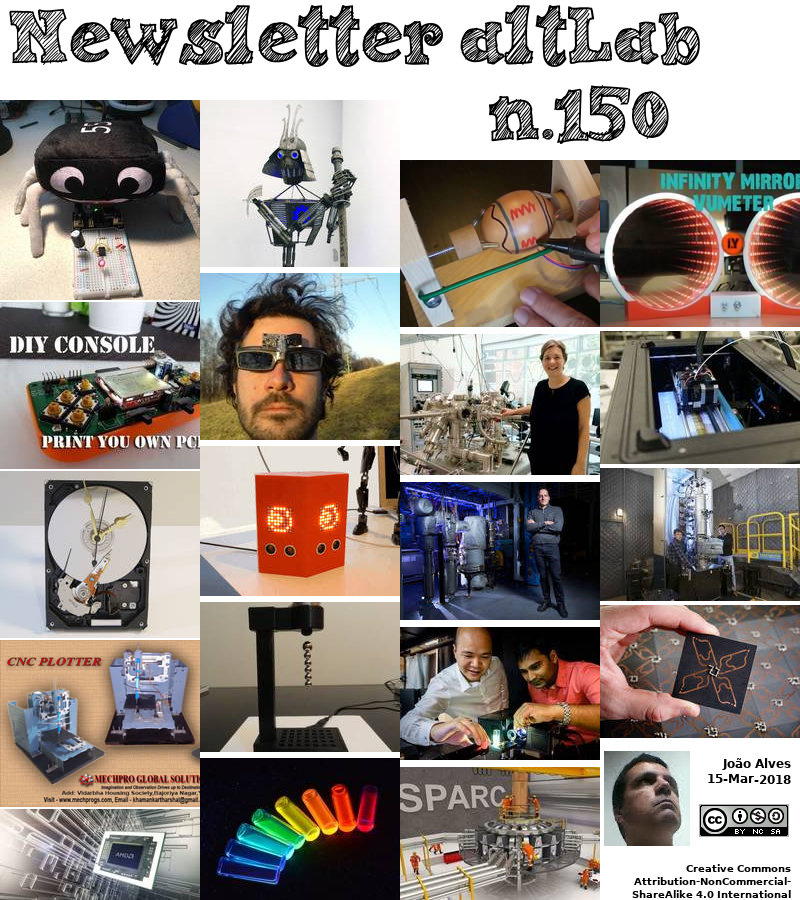
Editorial
Esta é a Newsletter Nº 150 que se apresenta com o mesmo formato que as anteriores. Se gostar da Newsletter partilhe-a!
Todas as Newsletters encontram-se indexadas no link.
Esta Newsletter tem os seguintes tópicos:
Faz hoje anos que nascia, em 1713, Nicolas-Louis de Lacaille. Este astrónomo francês deu nome a 15 das 88 constelações no céu. Ele passou 4 anos a mapear as constelações visíveis do Hemisfério Sul, como observado a partir do Cabo da Boa Esperança, a parte mais meridional da África. Durante os anos que lá esteve, ele disse ter observado mais de 10.000 estrelas usando apenas o seu refractor de meia polegada. Ele estabeleceu o primeiro catálogo de estrelas do sul que continha 9776 estrelas (Caelum Australe Stelliferum, publicado em parte em 1763 e completamente em 1847) e um catálogo de 42 nebulosas em 1755 contendo 33 objectos do espaço profundo (26 suas próprias descobertas).
Faz também anos hoje que nascia, em 1855, Charles Vernon Boys. Este físico inglês foi inventor de diversos instrumentos sensíveis. Os seus estudos incluíram mineração, metalurgia, química e física. Ele também foi autodidacta num amplo campo de métodos geométricos. Em 1881, ele inventou a integraph, uma máquina para desenhar a anti-derivada de uma função. Boys é conhecido particularmente pelo seu livro definitivo (1890) sobre as bolhas de sabão da física. Ele empregou a torção de fibras de quartzo para medir forças minuciosas, repetindo a experiência de Henry Cavendish, para melhorar a medida da constante gravitacional newtoniana. Ele também inventou um calorímetro de gravação automático melhorado para testar gás de carvão da cidade e câmaras de alta velocidade para fotografar objectos em movimento rápido, como balas e descargas de relâmpago.
Por fim, faz anos hoje que nascia, em 1930, Zhores Alferov. Este físico russo do campo da física do estado sólido, partilhou (com Bert Kroemer e Jack St. Clair Kilby) o Prémio Nobel de Física em 2000 "para o desenvolvimento de heterostruturas de semicondutores usadas em alta velocidade e optoeletrónica". Alferov inventou o heterotransistor. Isto permitiu lidar com frequências muito mais altas do que seus antecessores, e aparentemente revolucionou o telemóvel e as comunicações por satélite. Alferov e Kroemer aplicaram de forma independente esta tecnologia para disparar luzes laser. Isto, por sua vez, revolucionou o desenho de semicondutores numa série de áreas, incluindo LEDs, leitores de códigos de barras e CDs.
Nesta semana que passou ficámos a saber que existe uma organização empenhada em utilizar a tecnologia de impressão 3D para a criação de casas em países em vias de desenvolvimento. Nas colinas de BAIXA-SLUNG de El Salvador, construir uma casa não é uma tarefa fácil. A terra é vulnerável a terremotos, inundações, erupções vulcânicas. As estradas são frágeis e a energia eléctrica é escassa. Nos últimos anos, New Story - uma instituição de caridade residencial com sede em São Francisco - construiu mais de 150 casas, substituindo lonas e abrigos de sucata por casas que possuem telhados e pisos adequados. É um trabalho lento e laborioso num país onde quase um terço da população está sem abrigo. Cerca de um ano atrás, a organização começou a procurar por formas alternativas para construir estas tão necessárias casas e descobriu que a impressão em 3D poderia ser uma opção.
Também esta semana ficámos a conhecer um jovem de Andorra de nome David Aguilar, que desde muito novo era obcecado por Lego. Ele passou a sua infância a construir carros, aviões, helicópteros e, eventualmente, sua própria prótese. Nascido com um braço deformado, o auto-denominado "Hand Solo" decidiu levar as suas habilidades de construção de Lego para o próximo nível. Aos 18 anos, ele aperfeiçoou o seu projeto com o MK2, uma prótese para o braço com a capacidade de dobrar e pegar objectos com um aperto de pinça.
Ontem foi o dia PI, como é conhecido o dia 14 do mês 3, e a fundação Raspberry PI resolveu anunciar nessa data o novo Raspberry PI 3 B+. As principais melhorias deste modelo são um processador ARM Cortex-A53 CPU com 4 núcleos a 1.4GHz, Wifi Dual-band 802.11ac wireless LAN, Bluetooth 4.2, ethernet Gigabit (limitada a 300MBps), melhorias no boot de PXE e de USB e melhorias na gestão térmica.
Na Newsletter desta semana apresentamos diversos projetos de maker. É apresentada também a revista newelectronics de 13 de Março de 2018 e o livro Git Magic sobre diversos truques na utilização deste sistema de versionamento.
 João Alves ([email protected])
João Alves ([email protected])
O conteúdo da Newsletter encontra-se sob a licença  Creative Commons Attribution-NonCommercial-ShareAlike 4.0 International License.
Creative Commons Attribution-NonCommercial-ShareAlike 4.0 International License.
Novidades da Semana
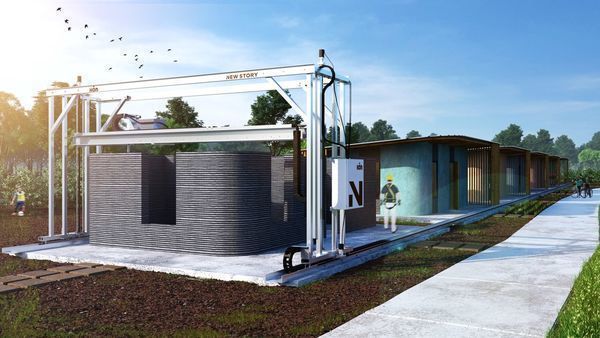
The quest to bring 3-D-Printed homes to the developing world
"IN THE LOW-SLUNG hills of El Salvador, building a house is not an easy task. The land is vulnerable to earthquakes, flooding, volcanic eruptions. The roads are rugged, electricity sparse. For the past several years, New Story—a housing charity based in San Francisco—has built over 150 homes there, replacing tarps and scrap metal shelters with houses that have proper roofs and floors. It's slow, painstaking work in a country where nearly a third of the population is without shelter. About a year ago, the company wondered if there was a better way to build." [...]

Building a Prosthetic Arm With Lego
"Ever since he was a kid, David Aguilar was obsessed with Lego. He spent his childhood building cars, planes, helicopters, and eventually, his own prosthetic. Born with a deformed arm, the self-named “Hand Solo” decided to take his Lego-building skills to the next level. At age 18, he perfected his designs with the MK2, a prosthetic arm with the ability to bend and pick up objects with a pincer-like grip. Now, he’s the coolest kid on the block. " [...]
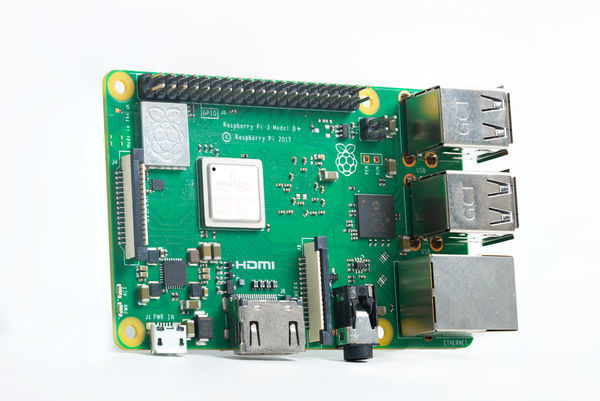
Raspberry PI 3 Model B+ on sale now at $35
"Here’s a long post. We think you’ll find it interesting. If you don’t have time to read it all, we recommend you watch this video, which will fill you in with everything you need, and then head straight to the product page to fill yer boots. (We recommend the video anyway, even if you do have time for a long read. ‘Cos it’s fab.) If you’ve been a Raspberry Pi watcher for a while now, you’ll have a bit of a feel for how we update our products." [...]
Outras Notícias

Oldest-Known Message In A Bottle Found In Australia
"In 1886, sailors on a German barque called Paula tossed a gin bottle with a message inside into waters hundreds of miles off the western coast of Australia. One hundred and thirty-one years later, a Perth resident stumbled upon the bottle on Australia's Wedge Island. It's believed to be the oldest-known message in a bottle, in terms of the amount of time that has passed between when it was written and when it was found. Before this discovery, Guinness World Records said that the oldest was 108 years old, found in Germany in 2015. Australian, German and Dutch researchers worked together to verify the note's authenticity, according to a report from the Western Australia Museum. Tonya Illman was walking on a sand dune in January when she spotted the old bottle." [...]

You can now use Arduino to program Linux IoT devices
"Today, at Embedded Linux Conference 2018, Arduino announced the expansion of the number of architectures supported by its Arduino Create platform for the development of IoT applications. With this new release, Arduino Create users can manage and program a wide range of popular Linux® single-board computers like the AAEON® UP² board, Raspberry Pi® and BeagleBone® as if they were regular Arduino boards. Multiple Arduino programs can run simultaneously on a Linux-based board and interact and communicate with each other, leveraging the capabilities provided by the new Arduino Connector. Moreover, IoT devices can be managed and updated remotely, independently from where they are located. To further simplify the user journey, Arduino has also developed a novel out-of-the-box experience for Raspberry Pi and BeagleBone boards, in addition to Intel® SBCs, which enables anyone to set up a new device from scratch via the cloud without any previous knowledge by following an intuitive web-based wizard. Arduino plans to continue enriching and expanding the set of features of Arduino Create in the coming months." [...]

Next NASA Mars Rover Reaches Key Manufacturing Milestone
"NASA's Mars 2020 mission has begun the assembly, test and launch operations (ATLO) phase of its development, on track for a July 2020 launch to Mars. The first planned ATLO activities will involve electrical integration of flight hardware into the mission's descent stage. The Mars 2020 rover, as well as its cruise stage, aeroshell and descent stage -- a rocket-powered "sky crane" that will lower the rover to the planet's surface -- will undergo final assembly at the Spacecraft Assembly Facility High Bay 1 at NASA's Jet Propulsion Laboratory in Pasadena, California. "No better place in the world to assemble NASA's next Mars rover than JPL's High Bay 1," said Mars 2020 Project Manager John McNamee at JPL. "On the floor you'll see the components of our spacecraft taking shape -- put together by people who are the best in the world at what they do. And on the wall behind them you will see all the logos of the historic missions of exploration that have also been assembled in High Bay 1 in the past."" [...]
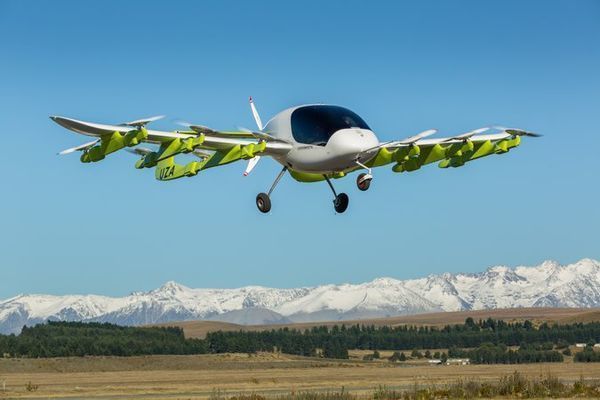
Larry Page's Flying Taxis, Now Exiting Stealth Mode
"Since October, a mysterious flying object has been seen moving through the skies over the South Island of New Zealand. It looks like a cross between a small plane and a drone, with a series of small rotor blades along each wing that allow it to take off like a helicopter and then fly like a plane. To those on the ground, it has always been unclear whether there was a pilot aboard. Well, it turns out that the airborne vehicle has been part of a series of “stealth” test flights by a company personally financed by Larry Page, the co-founder of Google and now the chief executive of Google’s parent, Alphabet. The company, known as Kitty Hawk and run by Sebastian Thrun, who helped start Google’s autonomous car unit as the director of Google X, has been testing a new kind of fully electric, self-piloting flying taxi. This is an altogether different project from the one you might have seen last year in a viral video of a single-pilot recreational aircraft that was being tested over water, and it’s much more ambitious." [...]

A raft of flaws in AMD chips makes bad hacks much, much worse
"Secure enclaves like the one found in iPhones are intended to be impenetrable fortresses that handle tasks too sensitive for the main CPUs they work with. AMD's version of that co-processor contains a raft of critical flaws that attackers could exploit to run malware that's nearly impossible to detect and has direct access to a vulnerable computer's most sensitive secrets, a report published Tuesday warned. The chips also contain what the report called "backdoors" that hackers can exploit to gain administrative access. The flaws—in AMD's EPYC, Ryzen, Ryzen Pro, and Ryzen Mobile lines of processors—require attackers to first gain administrative rights on a targeted network or computer, which is a hurdle that's difficult but by no means impossible to clear. From there, attackers can exploit the vulnerabilities to achieve a variety of extraordinary feats that would be catastrophic for the owners' long-term security. Among other things, the feats include: Running persistent malware inside the AMD Secure Processor that's impossible—or nearly impossible—to detect Bypassing advanced protections such as AMD's Secure Encrypted Virtualization, Firmware Trusted Platform Module, and other security features, which are intended to secure systems and sensitive data in the event that malware infects a computer's operating system Stealing credentials a vulnerable computer uses to access networks Physically destroying hardware by attackers in hardware-based "ransomware" scenarios “All these things are real” The four classes of vulnerabilities—dubbed Masterkey, Ryzenfall, Fallout, and Chimera—were described in a 20-page report headlined "Severe Security Advisory on AMD Processors."" [...]

Nokia pushes optical network capacity to theoretical limits with Photonic Service Engine 3 chipset; massive scale and radical simplicity for video, cloud and 5G growth
"Nokia pushes optical network capacity to theoretical limits with Photonic Service Engine 3 chipset; massive scale and radical simplicity for video, cloud and 5G growth - First chipset to implement probabilistic constellation shaping (PCS), a technique pioneered by Nokia Bell Labs that pushes fiber-optic performance close to the Shannon limit - Enables maximum capacity over any distance and on any fiber - from metro to subsea - increasing capacity up to 65% over currently deployed networks while reducing power by 60% - Reduces complexity and dramatically simplifies network operations - Increases financial return and longevity of expensive optical fibers by using latent capacity - Ideally suited to meet surging traffic demands of video, cloud and 5G for webscale companies and communication service providers Nokia today announced the next generation of its Photonic Service Engine (PSE) family of super-coherent digital signal processors, underscoring its leading position in the industry and innovation pedigree. The Nokia PSE-3 will be instrumental in the evolution of communication service provider (CSP) and webscale networks to meet the surging traffic demands of video, cloud and 5G by maximizing the capacity and performance of every link in their optical networks. The PSE-3 chipset is the first coherent digital signal processor to implement probabilistic constellation shaping (PCS), a modulation technique pioneered by Nokia Bell Labs. PCS pushes optical fiber transmission capacity to very near the Shannon Limit - the maximum theoretical capacity of a communications channel, defined by Claude Shannon in 1948 while a researcher at Bell Labs. By intelligently shaping the signal to match the characteristics of the optical fiber, PCS generates wavelengths that are more resilient to noise and other impairments, increasing capacity up to 65 percent over currently deployed networks, while also reducing power per bit by 60 percent. Networks built with systems using the new chipset require up to 35 percent fewer optical transponders, and by recovering latent capacity in deployed fiber, the PSE-3 extends the life of existing line systems and subsea cables, resulting in significant long-term savings." [...]

Microsoft reaches a historic milestone, using AI to match human performance in translating news from Chinese to English
"A team of Microsoft researchers said Wednesday that they believe they have created the first machine translation system that can translate sentences of news articles from Chinese to English with the same quality and accuracy as a person. Researchers in the company’s Asia and U.S. labs said that their system achieved human parity on a commonly used test set of news stories, called newstest2017, which was developed by a group of industry and academic partners and released at a research conference called WMT17 last fall. To ensure the results were both accurate and on par with what people would have done, the team hired external bilingual human evaluators, who compared Microsoft’s results to two independently produced human reference translations. Xuedong Huang, a technical fellow in charge of Microsoft’s speech, natural language and machine translation efforts, called it a major milestone in one of the most challenging natural language processing tasks. “Hitting human parity in a machine translation task is a dream that all of us have had,” Huang said. “We just didn’t realize we’d be able to hit it so soon.” Huang, who also led the group that recently achieved human parity in a conversational speech recognition task, said the translation milestone was especially gratifying because of the possibilities it has for helping people understand each other better." [...]
Ciência e Tecnologia

MIT and newly formed company launch novel approach to fusion power
"Goal is for research to produce a working pilot plant within 15 years. Progress toward the long-sought dream of fusion power — potentially an inexhaustible and zero-carbon source of energy — could be about to take a dramatic leap forward. Development of this carbon-free, combustion-free source of energy is now on a faster track toward realization, thanks to a collaboration between MIT and a new private company, Commonwealth Fusion Systems. CFS will join with MIT to carry out rapid, staged research leading to a new generation of fusion experiments and power plants based on advances in high-temperature superconductors — work made possible by decades of federal government funding for basic research. CFS is announcing today that it has attracted an investment of $50 million in support of this effort from the Italian energy company Eni. In addition, CFS continues to seek the support of additional investors." [...]
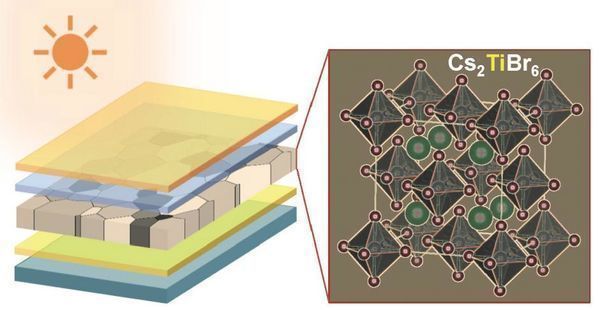
Researchers discover new lead-free perovskite material for solar cells
"Perovskite solar cells are a promising new low-cost photovoltaic technology, but most contain toxic lead; a team led by Brown researchers has introduced solar cells with a new titanium-perovskite material that gets the lead out. A class of materials called perovskites has emerged as a promising alternative to silicon for making inexpensive and efficient solar cells. But for all their promise, perovskites are not without their downsides. Most contain lead, which is highly toxic, and include organic materials that are not particularly stable when exposed to the environment. Now a group of researchers at Brown University and University of Nebraska – Lincoln (UNL) has come up with a new titanium-based material for making lead-free, inorganic perovskite solar cells. In a paper published in the journal Joule (a new energy-focused sister journal to Cell), the researchers show that the material can be a good candidate, especially for making tandem solar cells — arrangements in which a perovskite cells are placed on top of silicon or another established material to boost the overall efficiency." [...]
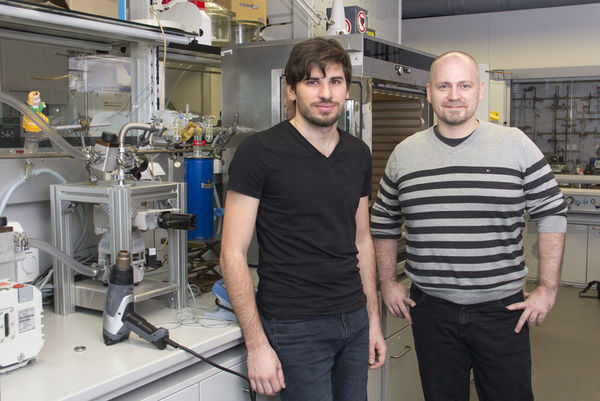
Nanostructures made of previously impossible material
"When you bake a cake, you can combine the ingredients in almost any proportions, and they will still always be able to mix together. This is a little more complicated in materials chemistry. Often, the aim is to change the physical properties of a material by adding a certain proportion of an additional element; however, it isn’t always possible to incorporate the desired quantity into the crystal structure of the material. At TU Wien, a new method has been developed using which previously unattainable mixtures can be achieved between germanium and desired foreign atoms. This results in new materials with significantly altered properties. More tin or gallium in the germanium crystal “Incorporating foreign atoms into a crystal in a targeted manner to improve its properties is actually a standard method,” says Sven Barth from the Institute of Materials Chemistry at TU Wien." [...]
Scaling silicon quantum photonic technology
"An international team of quantum scientists and engineers led by the University of Bristol and involving groups from China, Denmark, Spain, Germany and Poland, have realised an advanced large-scale silicon quantum photonic device that can entangle photons to incredible levels of precision. While standard quantum hardware entangles particles in two states, the team has found a way to generate and entangle pairs of particles that each has 15 states. The integrated photonic chip sets a new standard for complexity and precision of quantum photonics, with immediate applications for quantum technologies. Integrated quantum photonics allows the routing and control of single particles of light with intrinsically high stability and precision, however to date it has been limited to small-scale demonstrations in which only a small number of components are integrated on a chip. Scaling up these quantum circuits is of paramount importance to increasing the complexity and computational power of modern quantum information processing technologies, opening-up the possibility of many revolutionary applications. The team, led by scientists from the University of Bristol’s Quantum Engineering Technology Laboratories (QET Labs) has demonstrated the first ever large-scale integrated quantum photonic circuit, which integrating hundreds of essential components, can generate, control and analyse high-dimensional entanglement with an unprecedented level of precision." [...]
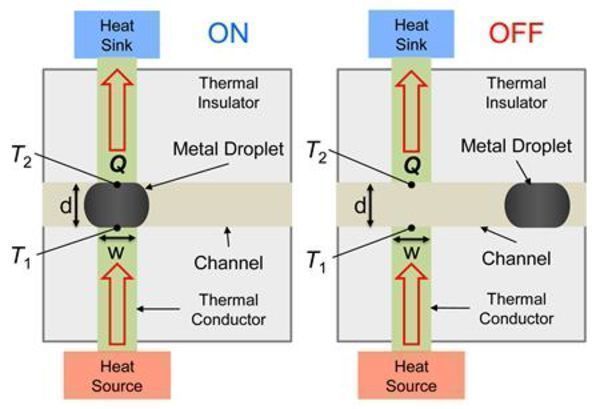
Illinois researchers develop heat switch for electronics
"Researchers at the University of Illinois at Urbana-Champaign have developed a new technology for switching heat flows 'on' or 'off'. The findings were published in the article "Millimeter-scale liquid metal droplet thermal switch," which appeared in Applied Physics Letters. Switches are used to control many technical products and engineered systems. Mechanical switches are used to lock or unlock doors, or to select gears in a car's transmission system. Electrical switches are used to turn on and off the lights in a room. At a smaller scale, electrical switches in the form of transistors are used to turn electronic devices on and off, or to route logic signals within a circuit." [...]

Atomristor - memristor effect in atomically thin nanomaterials
"In trying to bring brain-like (neuromorphic) computing closer to reality, researchers have been working on the development of memory resistors, or memristors, which are resistors in a circuit that 'remember' their state even if you lose power. Today, most computers use random access memory (RAM), which moves very quickly as a user works but does not retain unsaved data if power is lost. Flash drives, on the other hand, store information when they are not powered but work much slower. Memristors could provide a memory that is the best of both worlds: fast and reliable. "Previously there was a work by Mark Hersam's group on memristor effect in monolayer MoS2 in a planar configuration, Deji Akinwande, an Associate Professor at the University of Texas at Austin, tells Nanowerk. "This prior work has inspired us to consider vertical sandwich structures for memristors because of the massively higher density and scalability." [...]
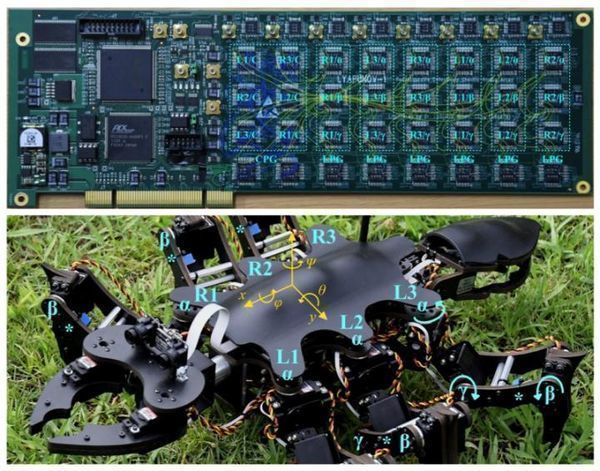
Tokyo Tech's six-legged robots get closer to nature
"A study led by researchers at Tokyo Institute of Technology (Tokyo Tech) has uncovered new ways of driving multi-legged robots by means of a two-level controller. The proposed controller uses a network of so-called non-linear oscillators that enables the generation of diverse gaits and postures, which are specified by only a few high-level parameters. The study inspires new research into how multi-legged robots can be controlled, including in the future using brain-computer interfaces. In the natural world, many species can walk over slopes and irregular surfaces, reaching places inaccessible even to the most advanced rover robots. It remains a mystery how complex movements are handled so seamlessly by even the tiniest creatures. What we do know is that even the simplest brains contain pattern-generator circuits (CPGs)[1], which are wired up specifically for generating walking patterns." [...]

Scientists develop new tool for imprinting biochips
"The new technology could allow researchers to fit more biochemical probes onto a single biochip and reduce the cost of screening and analyzing changes associated with disease development, detecting bioterrorism agents, and other areas of research 3-D printing has gained popularity in recent years as a means for creating a variety of functional products, from tools to clothing and medical devices. Now, the concept of multi-dimensional printing has helped a team of researchers at the Advanced Science Research Center (ASRC) at the Graduate Center of the City University of New York develop a new, potentially more efficient and cost-effective method for preparing biochips (also known as microarrays), which are used to screen for and analyze biological changes associated with disease development, bioterrorism agents, and other areas of research that involve biological components. In a paper published today in the journal Chem, researchers with the ASRC’s Nanoscience Initiative detail how they have combined microfluidic techniques with beam-pen lithography and photochemical surface reactions to devise a new biochip printing technique. The method involves exposing a biochip’s surface to specific organic reagents, and then using a tightly focused beam of light to adhere the immobilized reagents to the chip’s surface. The process allows scientists to repeatedly expose a single chip to the same or different factors and imprint the reactions onto different sections of the biochip. The result is a biochip that can accommodate more probes than is achievable with current commercial platforms." [...]

Breakthrough in Circuit Design Makes Electronics More Resistant to Damage and Defects
"A newly published paper in Nature Electronics details how researchers at the Advanced Science Research Center, GC/CUNY, used an array of nonlinear resonators to overcome signal disruption when electronic circuits are broken or damaged People are growing increasingly dependent on their mobile phones, tablets and other portable devices that help them navigate daily life. But these gadgets are prone to failure, often caused by small defects in their complex electronics, which can result from regular use. Now, a paper in today’s Nature Electronics details an innovation from researchers at the Advanced Science Research Center (ASRC) at The Graduate Center of The City University of New York that provides robust protection against circuitry damage that affects signal transmission. The breakthrough was made in the lab of Andrea Alù, director of the ASRC’s Photonics Initiative. Alù and his colleagues from The City College of New York, University of Texas at Austin and Tel Aviv University were inspired by the seminal work of three British researchers who won the 2016 Noble Prize in Physics for their work, which teased out that particular properties of matter (such as electrical conductivity) can be preserved in certain materials despite continuous changes in the matter’s form or shape. This concept is associated with topology—a branch of mathematics that studies the properties of space that are preserved under continuous deformations." [...]

OLED: Nanometer-thin layer improves efficiency
"Scientists at the Max Planck Institute for Polymer Research in Mainz, Germany, have received an unexpected result: They have discovered a new method to improve contacts in OLEDs. This new approach leads to a higher energy efficiency and can be used in almost any organic semiconductor element. Organic light-emitting diodes (OLEDs) are used as light sources in high-quality smartphone displays and large-area high-end products such as OLED televisions. The main active component in an OLED is a light-emitting layer of an organic semiconductor, which converts electrical energy into visible light. In an OLED, the organic semiconducting layer is situated between two electrodes; by applying a voltage across these two electrodes, an electric current passes through the OLED, which is converted into visible light. However, for many organic semiconductors, especially for blue- or ultraviolet-emitting materials, it is difficult to inject the current from the positive electrode into the OLED." [...]
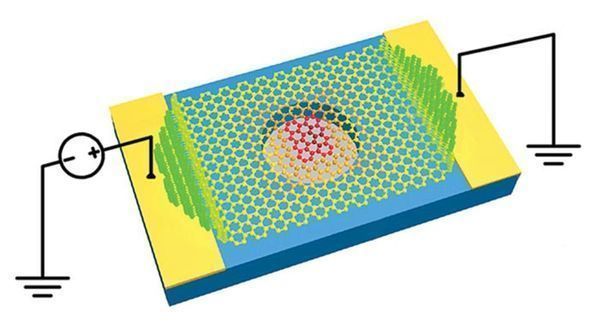
Graphene opens up new applications for microscale resonators
"Operation at high temperatures and broad tunability could bring microelectromechanical resonators to space and beyond A range of sensing and communications technologies, such as satellites, already rely on tiny devices called resonators—also known as vibrating microelectromechanical and nanoelectromechanical systems (MEMS/NEMS). But engineers have faced limits in the temperatures these tiny components can withstand and the range of frequencies that they can pick up. Now scientists at Case Western Reserve University have constructed resonators out of a single layer of graphene that can withstand high temperatures and operate across a broad range of frequencies (Nano Lett. 2018, DOI: 10.1021/acs.nanolett.7b04685). Today MEMS/NEMS resonators are usually made out of silicon, but a few years back researchers started to make them out of graphene because of the material’s superior physical properties. Chief among these are its high conductivity, mechanical flexibility, and light weight." [...]
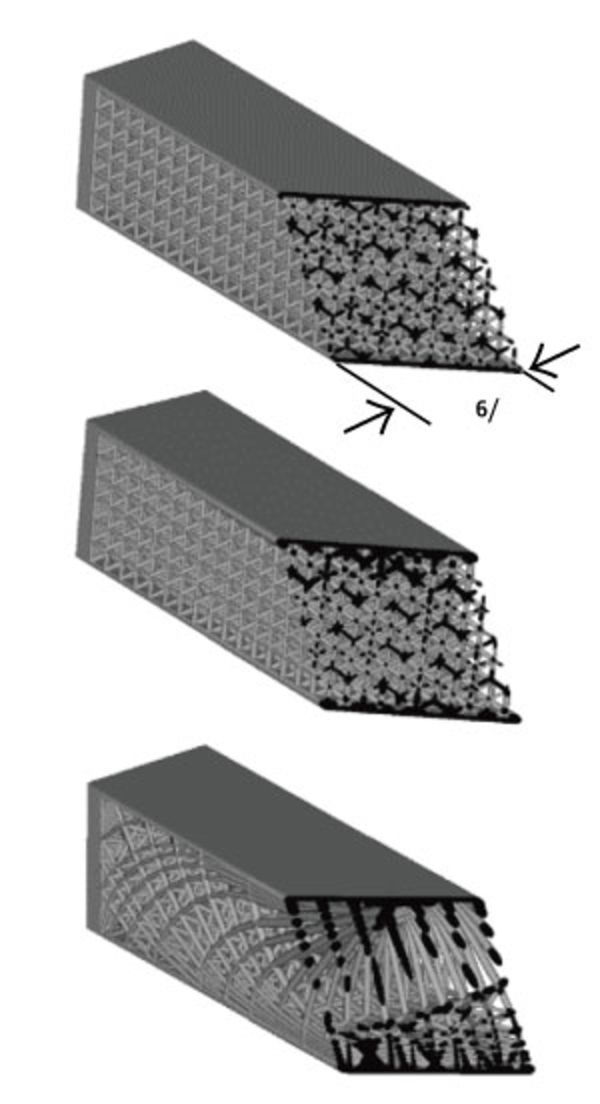
Nature inspires light, robust lattice structures
"New technique for creating lightweight materials that are stiffer and stronger than previously possible Advances in materials engineering have led to the development of lightweight structures that are both strong and stiff, which are transforming aerospace, automotive and medical industries. Conventional manufacturing techniques like casting and machining, however, limit the designs that can be fabricated as they are prone to inaccuracies and struggle to achieve the best results. Now, scientists at A*STAR have invented a method that uses additive manufacturing techniques to create lightweight lattice structures with greatly improved stiffness and strength1, paving the way for new materials for use in a wide range of applications including impact absorbent materials and sandwich structures. The design and optimization of lightweight cellular and lattice structures is an emerging field made possible by advances in metal and polymer additive manufacturing, such as the ability to accurately print highly complex geometries. By mimicking structures occurring in nature, Stephen Daynes and colleagues from A*STAR’s Singapore Institute of Manufacturing Technology have developed a method to create these new robust materials in collaboration with researchers from the National University of Singapore. “Lattice structures exceed the structural performance of conventional solid materials for use in lightweight sandwich cores, medical implants and a new class of lattice-type metamaterials with specific mechanical and thermal properties,” explains Daynes." [...]

Researchers uncover most complex mineral on Earth
"Researchers at the University of Notre Dame found that the complexity of a uranium-based mineral, dubbed ewingite, is nearly twice as high as the previous most complex mineral. The study, published in Geology, required the use of the Advanced Photon Source at the U.S. Department of Energy’s Argonne National Laboratory, the brightest X-ray source in the Western Hemisphere, to define the mineral’s structure. According to Peter C. Burns, Henry J. Massman Professor of Civil and Environmental Engineering and Earth Sciences, director of the Center for Sustainable Energy at Notre Dame and co-author of the study, structural complexity of minerals can be measured by bits per unit cell. The average is about 228 bits. “Minerals at 1,000 bits are considered very complex, but only about 2.5 percent of known minerals receive that designation,” said Burns. “In comparison, ewingite measures at 12,684.86 bits per unit cell, essentially doubling the measuring stick that mineralogists currently use.” Ewingite was found on a damp mine wall in the Czech Republic and was in the same region where uranium ore was mined for Marie Curie’s groundbreaking studies of radioactivity a century ago." [...]

Researchers demonstrate existence of new form of electronic matter
"Researchers have produced a “human scale” demonstration of a new phase of matter called quadrupole topological insulators that was recently predicted using theoretical physics. These are the first experimental findings to validate this theory. The researchers report their findings in the journal Nature. The team’s work with QTIs was born out of the decade-old understanding of the properties of a class of materials called topological insulators. “TIs are electrical insulators on the inside and conductors along their boundaries, and may hold great potential for helping build low-power, robust computers and devices, all defined at the atomic scale,” said mechanical science and engineering professor and senior investigator Gaurav Bahl. The uncommon properties of TIs make them a special form of electronic matter." [...]
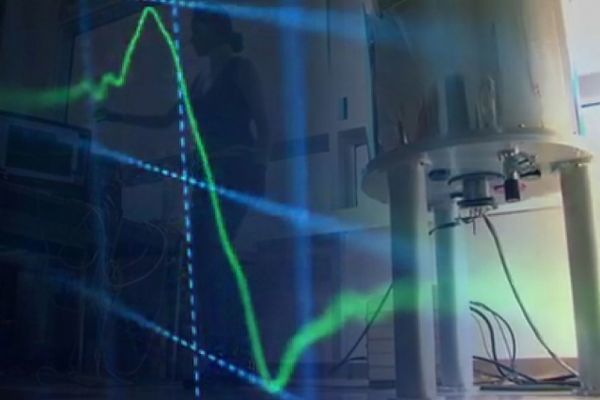
Scientists gain new visibility into quantum information transfer
"Advance holds promise for “wiring” of quantum computers and other systems, and opens new avenues for understanding basic workings of the quantum realm. When we talk about “information technology,” we generally mean the technology part, like computers, networks, and software. But information itself, and its behavior in quantum systems, is a central focus for MIT’s interdisciplinary Quantum Engineering Group (QEG) as it seeks to develop quantum computing and other applications of quantum technology. A QEG team has provided unprecedented visibility into the spread of information in large quantum mechanical systems, via a novel measurement methodology and metric described in a new article in Physics Review Letters. The team has been able, for the first time, to measure the spread of correlations among quantum spins in fluorapatite crystal, using an adaptation of room-temperature solid-state nuclear magnetic resonance (NMR) techniques. Researchers increasingly believe that a clearer understanding of information spreading is not only essential to understanding the workings of the quantum realm, where classical laws of physics often do not apply, but could also help engineer the internal “wiring” of quantum computers, sensors, and other devices." [...]
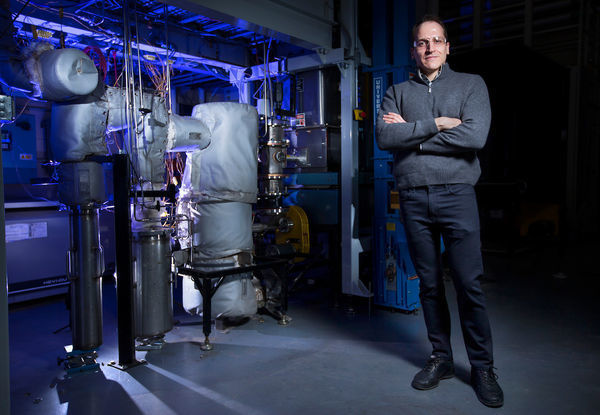
Engineers developing tools to understand, scale up autothermal production of bio-oil
"On a whim, Iowa State University’s Robert C. Brown asked students to crank up the oxygen. Brown and the engineers in his research group had worked for years to develop a thermochemical process called fast pyrolysis to produce biorenewable products. The process uses heat in the absence of oxygen to break down corn stalks, wood chips and other biomass to produce a liquid bio-oil for energy and a biochar for fertilizer. The engineers had explored adding a little oxygen to the reactor. Brown suggested adding more and more. And that started to change everything." [...]

Seeing is believing: precision atom qubits achieve milestone
"The unique Australian approach of creating quantum bits from precisely positioned individual atoms in silicon is reaping major rewards, with two of these atom qubits made to “talk” to each other for the first time. The unique Australian approach of creating quantum bits from precisely positioned individual atoms in silicon is reaping major rewards, with UNSW Sydney-led scientists showing for the first time that they can make two of these atom qubits “talk” to each other. The team – led by UNSW Scientia Professor Michelle Simmons, Director of the Centre of Excellence for Quantum Computation and Communication Technology, or CQC2T – is the only group in the world that has the ability to see the exact position of their qubits in the solid state. Simmons’ team create the atom qubits by precisely positioning and encapsulating individual phosphorus atoms within a silicon chip. Information is stored on the quantum spin of a single phosphorus electron. The team’s latest advance – the first observation of controllable interactions between two of these qubits – is published in the journal Nature Communications." [...]
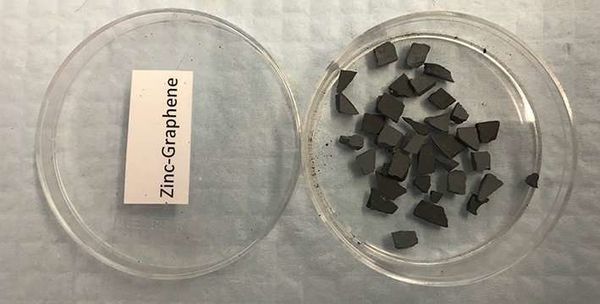
Graphene promise for more efficient fertilisers
"Fertilisers with lower environmental impacts and reduced costs for farmers are being developed by University of Adelaide researchers in the world-first use of the new advanced material graphene as a fertiliser carrier. In partnership with industry, the researchers have demonstrated effective slow release fertilisers can be produced from loading essential trace elements onto graphene oxide sheets. Using graphene as a carrier means the fertilisers can be applied in a more targeted fashion, with overall increased fertiliser efficiency and great nutrient uptake by the plants. The graphene-based carriers have so far been demonstrated with the micronutrients zinc and copper. Work is continuing with macronutrients such as nitrogen and phosphate. “Fertilisers that show slower, more controlled release and greater efficiency will have reduced impact on the environment and lower costs for farmers over conventional fertilisers, bringing significant potential benefit for both agriculture and the environment,” says Professor Mike McLaughlin, Head of the University of Adelaide’s Fertiliser Technology Research Centre at the Waite campus." [...]

Graphene flakes for future transistors
"Graphene nanoflakes are promising for possible applications in the field of nanoelectronics, and the subject of a study recently published in Nano Letters. These hexagonal nanostructures exhibit quantum effects for modulating current flow. Thanks to their intrinsic magnetic properties, they could also represent a significant step forward in the field of spintronics. The study, conducted via computer analysis and simulations, was led by Massimo Capone. "We have been able to observe two key phenomena by analysing the properties of graphene nanoflakes. Both are of great interest for possible future applications," says Capone, co-author of the study." [...]

Sweet relief for lithium batteries' dendrite problem
"Sugar may not be good for your health, but the wrinkle it provides to researchers could be great for the future of battery technology. Scientists at Rice University and Arizona State University got a bit of sweet satisfaction from their solution to a long-standing conundrum: the formation of dendrites that degrade and ultimately destroy lithium metal batteries. As reported this week in Nature Energy, the team uses sugar cubes as a key component in building dendrite-quenching substrates for lithium anodes. Lithium, a soft metal, has the ability to store far more energy than current electrodes used in lithium-ion batteries. It could allow electric cars to run longer on a single charge and facilitate backup energy supplies for solar power grids. But pure lithium is highly reactive with organic battery components, and researchers are looking for ways to make lithium batteries as long-lasting and safe as lithium-ion batteries." [...]

A milestone in petahertz electronics
"In a semiconductor, electrons can be excited by absorbing laser light. Advances during the past decade enabled measuring this fundamental physical mechanism on timescales below a femtosecond (10-15 s). ETH physicists now for the first time resolved the response of electrons in gallium arsenide at the attosecond (10-18 s) timescale, and gained unexpected insights for future ultrafast opto-electronic devices with operation frequencies in the petahertz regime. Gallium arsenide is a technologically important narrow-band-gap semiconductor, in which the excitation of electrons from the valence into the conduction band produces charge carriers that can transport electrical current through electronics components. In addition to this so-called inter-band transition, carriers can also be accelerated within the individual bands as the electrons interact with the laser light. This is due to the strong electric field associated with the laser light, leading to intra-band motion." [...]

Tiny electronics could solve security issues
"A University of Sydney engineer has developed a new nanotechnology-based component that could sit at the heart of anti-counterfeiting technologies for the fashion and defence industries and fraud-proof verification techniques for online machines. Working with an international team, Dr Omid Kavehei from the School of Electrical and Information Engineering has designed an innovative building block for a new security system that could enable significantly improved security for a variety of authentication strategies that are used in cyber-physical and internet-connected portable devices. Dr Kavehei is investigating how a new breed of low-cost tiny electronic devices at nanoscales – just billionths of a metre or 100,000 times smaller than the width of a human hair – could be used to ensure the security of authentication and verification processes in the billions of devices connected to the Internet. These devices could be used in the fashion industry, or in medical devices such as pacemakers, or electronic chipsets used in defence/military components. “Impenetrable authentication is the pillar of security in most physical devices. The challenge is how to build a robust authentication mechanism that is inexpensive, reliable and does not need excessive energy supply to function,” Dr Kavehei said." [...]

Mastering the Future Power Grid
"The electric energy system is becoming increasingly diverse and distributed. This trend is bound to have an impact on how the system operators will control and optimize the future grid, blogs Gabriela Hug. Optimizing the electrical power grid has always been a difficult task because its state is constantly changing. Now electric power systems all over the world are transitioning from highly centralized infrastructures with bulk generation plants to increasingly distributed generation and storage solutions. The driver is the ambition to render the electric power supply more sustainable by integrating green energy into the grid. But the growing penetration of wind and solar generation also increases the challenge of balancing their variable output." [...]
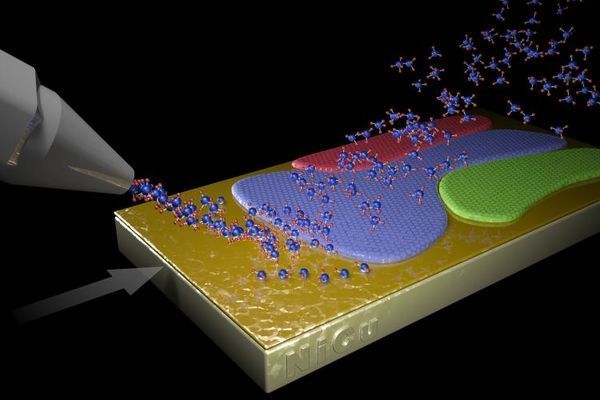
Method to grow large single-crystal graphene could advance scalable 2D materials
"A new method to produce large, monolayer single-crystal-like graphene films more than a foot long relies on harnessing a “survival of the fittest” competition among crystals. The novel technique, developed by a team led by the Department of Energy’s Oak Ridge National Laboratory, may open new opportunities for growing the high-quality two-dimensional materials necessary for long-awaited practical applications. Making thin layers of graphene and other 2D materials on a scale required for research purposes is common, but they must be manufactured on a much larger scale to be useful. Graphene is touted for its potential of unprecedented strength and high electrical conductivity and can be made through well-known approaches: separating flakes of graphite—the silvery soft material found in pencils—into one-atom-thick layers, or growing it atom by atom on a catalyst from a gaseous precursor until ultrathin layers are formed. The ORNL-led research team used the latter method—known as chemical vapor deposition, or CVD—but with a twist. In a study published in Nature Materials, they explained how localized control of the CVD process allows evolutionary, or self-selecting, growth under optimal conditions, yielding a large, single-crystal-like sheet of graphene." [...]
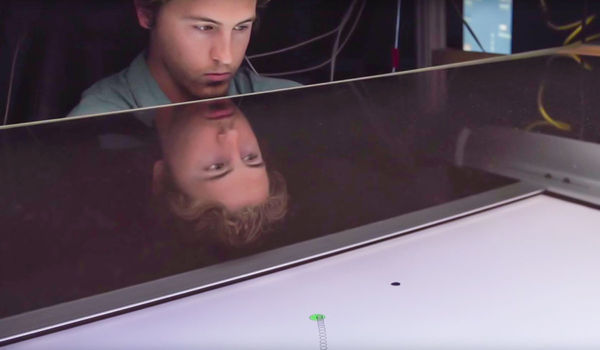
Researchers work together to improve communication-aiding technologies
"Deciding which hand to use for communication-aiding technology is a cognitive task that can slow the user down, potentially inhibiting communication and performance, according to a Penn State study. More than four million Americans who have such complex disabilities that they cannot meet their communication needs through their own speech can benefit from the use of aided Augmentative and Alternative Communication, or AAC, which is the use of computers, tablets or mobile devices to supplement or replace speech or writing. Because many individuals access these devices through hand reaches, it is necessary to consider hand or arm movements in design of AAC tools and systems. "Crossing midline, or reaching an arm over the body, is more 'costly' — uses more time and effort," said Robert Sainburg, professor of kinesiology and neurology, and co-author of a study that recently appeared in the journal Neuroscience. The researchers' findings suggest that cognitive processes are normally engaged to avoid costly actions, and that choosing the best (lowest-cost) response takes cognitive effort, even though one does not normally associate such a seemingly easy choice with cognition. Previous studies suggest that selecting which hand to use for a reaching task appears to be modulated by a factor described as "task difficulty."" [...]
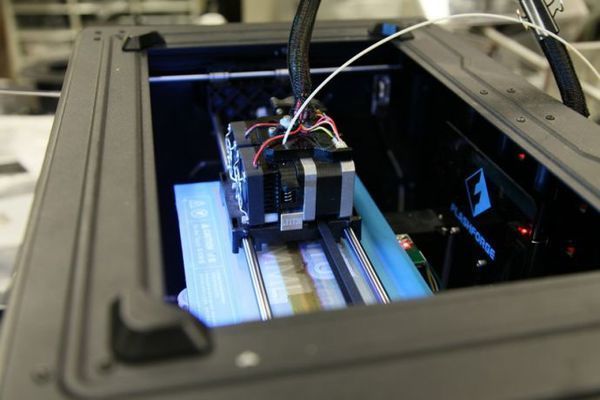
3-D printing breakthrough for lightweight syntactic foams could help submarines dive deeper
"A team of materials scientists at NYU Tandon School of Engineering has developed the first process to 3D print components of syntactic foam — extremely strong and lightweight composites used in vehicles, airplanes, and ships. Their breakthrough holds particular promise for submarines because it will enable manufacturers to print components with complex shapes capable of surviving stresses at greater depths. Syntactic foams, a mixture of billions of microscopic hollow glass or ceramic spheres in epoxy or plastic resin, are widely used in submarines like James Cameron’s Deepsea Challenger and the next-generation Alvin deep-sea explorer because of their remarkable buoyancy and strength. In two papers published in JOM, the Journal of the Minerals, Metals & Materials Society, Nikhil Gupta, an associate professor of mechanical and aerospace engineering, student researchers in his Composite Materials and Mechanics Lab at NYU Tandon’s Mechanical Engineering Department, and collaborators in India reported they had developed syntactic-foam filaments and processes to 3D print them using off-the-shelf commercial printers. Currently, syntactic-foam parts are made by injection molding, and the parts must be joined with adhesives and fasteners, introducing vulnerabilities. 3D printing — also called additive manufacturing — could allow manufacturers to make complex parts such as vehicle shells and internal structures as single units, making them far stronger." [...]
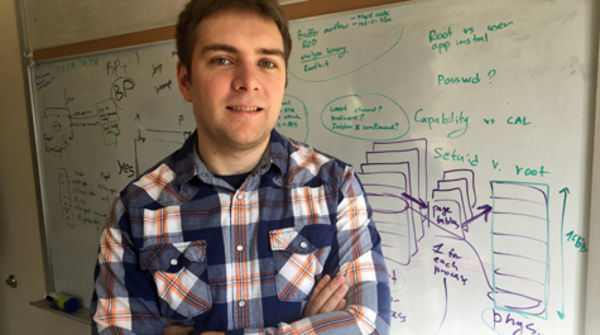
Exposing the ghost in our machines
"The threat started making headlines around New Years. Publications around the globe warned of the biggest computer chip vulnerability ever discovered, a series of security flaws affecting any device with a microprocessor -- from laptops to smartphones. Researchers had found that in an effort to make computer chips more efficient, major manufacturers had inadvertently inserted an opening that would allow hackers to spy on sensitive data. In two papers that were published on Jan. 3, researchers coined the cyber security threats Meltdown and Spectre. The name Meltdown was chosen for the attack’s ability to “melt” the security system typically enforced by a processor’s hardware. The name Spectre was based on the root cause of the security vulnerability, speculative execution, a speed-enhancing technique in which the processor tries to predict what part of code it will be required to execute next and starts executing it." [...]

New conductive coating may unlock biometric and wearable technology of the future
"A team of researchers from the College of Engineering at Texas A&M University have developed a mechanically robust conductive coating that can maintain performance under heavy stretching and bending. Stretchable, bendable and foldable electronics are crucial for the development of emerging technologies like adaptive displays, artificial skin, and biometric and wearable devices. This presents a unique challenge of balancing electronic performance and mechanical flexibility. The difficulty lies in finding a material that can withstand a wide array of deformations, like stretching, bending and twisting, all while maintaining electrical conductivity. Adding to the challenge is the need for this conductivity to be engineered into a variety of different surfaces, such as cloth, fiber, glass or plastic. A collaborative team from the Artie McFerrin Department of Chemical Engineering and the Department of Materials Science and Engineering led by Dr. Jodie Lutkenhaus , associate professor and holder of the William and Ruth Neely Faculty Fellowship, has solved this problem through the development of a new surface-agnostic stretchable, bendable and foldable conductive coating, opening the door for a wide variety of flexible electronics." [...]

UTSA researchers want to teach computers to learn like humans
"A new study by Paul Rad, assistant director of the UTSA Open Cloud Institute, and Nicole Beebe, Melvin Lachman Distinguished Professor in Entrepreneurship and director of the UTSA Cyber Center for Security and Analytics, describes a new cloud-based learning platform for artificial intelligence (A.I.) that teaches machines to learn like humans. "Cognitive learning is all about teaching computers to learn without having to explicitly program them,” Rad said. “In this study, we’re presenting an entirely new platform for machine learning to teach computers to learn the way we do.” To build the cloud-based platform, Rad and Beebe studied how education and understanding has evolved over the past five centuries. They wanted to gain a better picture of how computers could be taught to approach deductive reasoning. “Our goal here is to teach the machine to become smarter, so that it can help us." [...]
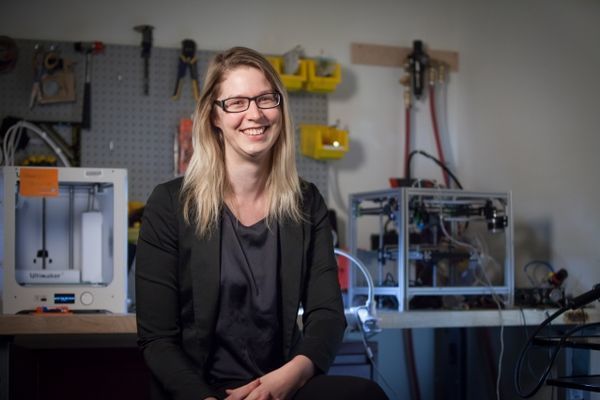
Changing the color of 3-D printed objects
"CSAIL system uses custom ink and ultraviolet light to repeatedly change an object's color. 3-D printing has come a long way since the first rapid prototyping patent was rejected in 1980. The technology has evolved from basic designs to a wide range of highly-customizable objects. Still, there’s a big issue: Once objects are printed, they’re final. If you need a change, you’ll need a reprint. But imagine if that weren’t the case — if, for example, you could change the color of your smartphone case or earrings on demand." [...]

UBC researchers invent new method to create self-tinting windows
"UBC chemistry researchers have developed a simple, cost-effective technique for making smart windows that could lead the way for wide-scale adoption of this energy-saving technology. Smart windows conserve building energy by switching from clear to tinted, dynamically controlling heat and light from the sun, depending on the building and occupants’ needs. “Conventional windows waste a third of all energy used to heat, ventilate and air condition buildings,” said Curtis Berlinguette, a professor of chemistry, chemical & biological engineering and the Stewart Blusson Quantum Matter Institute at UBC. “Smart window technologies offer the opportunity to reduce these energy losses but the main challenge is finding ways to make these windows less expensive.” Wei Cheng, who led this project as part of his postdoctoral work at UBC, found a new way to make glass materials that change colour in response to electricity, building on a technique co-developed in Berlinguette’s lab. Cheng’s method deposits a liquid solution containing a metal ion onto glass and then uses ultraviolet light to transform it into a film that coats the glass. The film is completely transparent but becomes blue when electricity passes through, ultimately creating the active component of a smart window." [...]
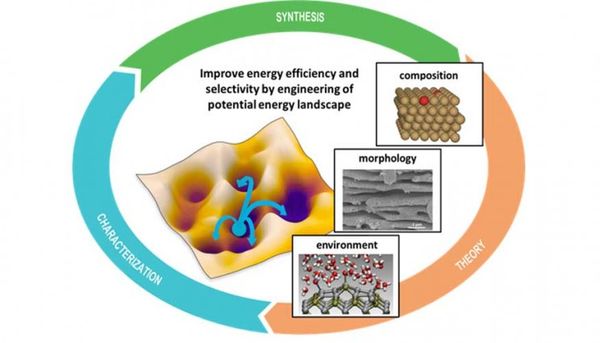
Lab scientists to improve energy efficiency of copper catalysts that convert CO2 to methane
"Lawrence Livermore National Laboratory (LLNL) researchers have received $1 million from the Department of Energy to improve the energy efficiency of copper-based catalysts to convert carbon dioxide into methane and other valuable hydrocarbon products. Led by LLNL’s Juergen Biener, the project will help meet the nation’s future energy needs by converting low-cost, abundant resources into commercially viable fuels. Catalysts play a key role in these efforts. They can convert CO2, an industrial waste product, into methane, a versatile fuel that can be readily integrated into efforts to fuel vehicles and power plants. At the same time, catalysts convert excess electrical energy produced via renewable energy resources, such as solar and wind, into chemical energy, making it easy to store the energy for future use. However, current electrochemical catalyst technologies are energy intensive and costly, and unlikely to be competitive with traditional fuel production methods." [...]

Energy level alignment for molecular electronics
"NUS physicists have found that complex electron-electron interactions change the energy levels at molecule-metal interfaces, affecting the performance of molecular electronic devices. Molecular electronics involves the use of molecules as the main building block for creating the electronic circuitry. It can potentially be used to develop circuits that are much smaller than those made from conventional silicon processes. Understanding the electronic properties of the interface between the molecules and metal conductors, particularly their associated energy levels, is important for rationalising and optimising device performance. This is central to the development of molecular electronics. A fundamental property of every molecule is its energy gap, defined as the energy difference between the highest and lowest orbital energy level occupied and unoccupied by electrons respectively." [...]

Researchers develop spectroscopic thermometer for nanomaterials
"A scientific team led by the Department of Energy’s Oak Ridge National Laboratory has found a new way to take the local temperature of a material from an area about a billionth of a meter wide, or approximately 100,000 times thinner than a human hair. This discovery, published in Physical Review Letters, promises to improve the understanding of useful yet unusual physical and chemical behaviors that arise in materials and structures at the nanoscale. The ability to take nanoscale temperatures could help advance microelectronic devices, semiconducting materials and other technologies, whose development depends on mapping the atomic-scale vibrations due to heat. The study used a technique called electron energy gain spectroscopy in a newly purchased, specialized instrument that produces images with both high spatial resolution and great spectral detail. The 13-foot-tall instrument, made by Nion Co., is named HERMES, short for High Energy Resolution Monochromated Electron energy-loss spectroscopy-Scanning transmission electron microscope. Atoms are always shaking." [...]
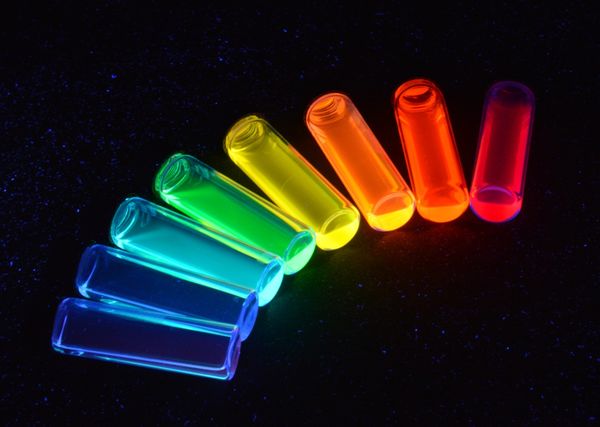
'Quantum dot' lighting technology takes forward leap thanks to new superacid treatment
"A “superacid” much stronger than automobile battery acid has enabled a key advance toward a new generation of LED lighting that’s safer, less expensive and more user friendly. Researchers at Oregon State University used the organic superacid to improve the performance of “quantum dots” made from copper indium disulfide, a compound much less toxic than the lead or cadmium that typically serve as the basis for the light-emitting nanocrystals. Used in optics and electronics, quantum dots have been around for some time. But they can be expensive to manufacture as well as unsafe for some potential applications, including biomedical imaging, because of lead and cadmium’s toxicity. “There are a variety of products and technologies that quantum dots can be applied to, but for mass consumer use, possibly the most important is improved LED lighting,” said Greg Herman, professor of chemical engineering in the OSU College of Engineering. “And there are now light-emitting nanocrystal TVs on the market that use quantum dots.” Manufacturing techniques being developed at Oregon State are dealing with the toxicity issue and should scale up to large volumes for low-cost commercial applications." [...]

NTU scientists take multi-coloured images with a lensless camera
"A new camera technology developed by scientists from Nanyang Technological University, Singapore (NTU Singapore) can take sharp, colour images without using a lens and colour filters. Using only a piece of ground glass and a monochrome sensor, the scientists created multi-coloured images by ‘reverse engineering’ the light that is scattered by the translucent matt surface of the ground glass, thus obtaining the original image that was projected on to it. Since different wavelengths of light are scattered differently by the ground glass, the NTU scientists created an algorithm to reconstruct the image. To do this they created a library of ‘speckle patterns’ linked to each wavelength of light, including those in the infrared and ultraviolet spectrums which are not visible to the naked eye. In a conventional camera, optics made from glass or plastic lenses capture light and guide it onto the colour filters and camera sensor to obtain sharp colour images. These lenses are usually bulky in size and expensive due to the precision manufacturing required." [...]
Documentação
A documentação é parte essencial do processo de aprendizagem e a Internet além de artigos interessantes de explorar também tem alguma documentação em formato PDF interessante de ler. Todos os links aqui apresentados são para conteúdo disponibilizado livremente pelo editor do livro.
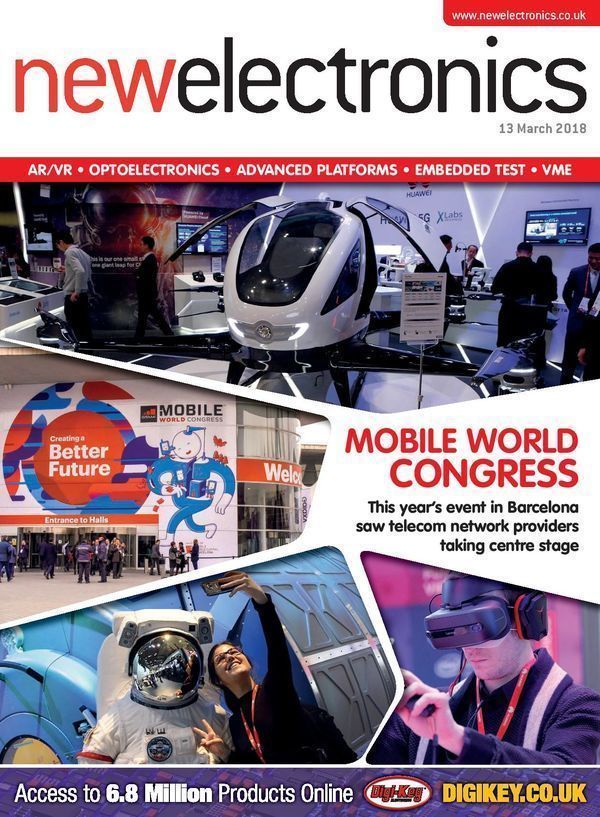
newelectronics 13 de Março 2018
"New Electronics is a fortnightly magazine focusing on technological innovation, news and the latest developments in the electronics sector. Downloadable as a digital page turner or pdf file, or offered as a hard copy, the New Electronics magazine is available in a format to suit you. " [...]

Git Magic
"Git (http://git-scm.com/) is a version control Swiss army knife. A reliable versatile multipurpose revision control tool whose extraordinary flexibility makes it tricky to learn, let alone master. As Arthur C. Clarke observed, any sufficiently advanced technology is indistinguishable from magic. This is a great way to approach Git: newbies can ignore its inner workings and view Git as a gizmo that can amaze friends and infuriate enemies with its wondrous abilities. Rather than go into details, we provide rough instructions for particular effects. After repeated use, gradually you will understand how each trick works, and how to tailor the recipes for your needs." [...]
Projetos Maker
Diversos Projetos interessantes.
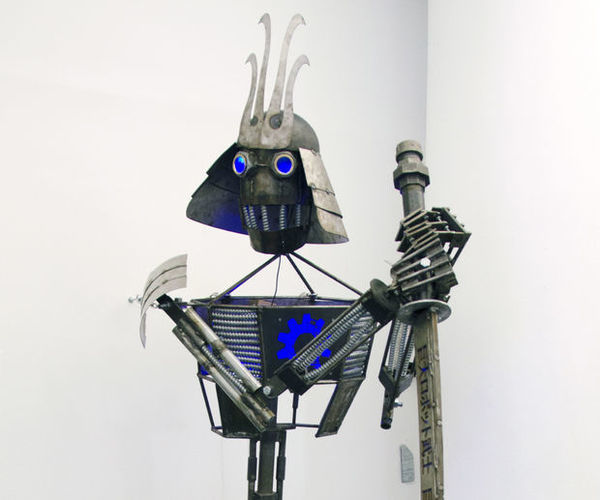
Talking Robot
"This is a tutorial on how to make a prank involving a robot that plays sounds when somebody walks by. This prank uses an Arduino, a distance sensor, a servo motor and a DF Player amongst other materials. We hope that you get funny reactions from your prank! " [...]

Capacitive Touch With PIC16F886 Microcontroller
"In this tutorial we will go over how you can use a PIC16F886 microcontroller to detect differances in capacitance, this can later be used to tell if a touch pad is being pressed. It's good to be familiar with pic microcontrollers prior to making this project. " [...]
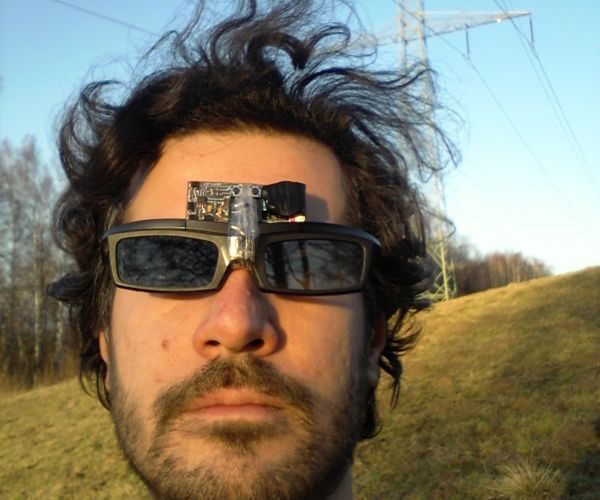
High Voltage Alternating Occlusion Training Glasses
"In my first instructable, Ive described how to build a device that should be quite helpful to somebody who wans to treat amblyopia (lazy eye). The design was very simplistic and had some drawbacks (it required use of two batteries and liquid crystal panels were driven by low voltage). I decided to improve the design by adding voltage multiplier and external switching transistors. Higher complexity required use of SMD components. " [...]

Color Lock
"This is a door locking system that uses a card with a preset color sequence printed on it to unlock the door. The system is still in the prototyping stage, i'm waiting for the actual lock part to arrive in mail to continue developing this. The idea behind this system is to avoid using RFID authentication, as it can be 'stolen' without contact, and this system offers a simple physical object that you use to authenticate yourself - think of it as an updated physical key. The system can offer much more than the conventional keys: if you lose your key, you simply print a new one, you can use a number of different keys for the same lock (or just one if you choose), the system logs all entries with timestamps (useful for tracking access), you can use your regular printer to print new keys, you can unlock it via Wi-Fi when paired with your phone or another device, the system can be used to authenticate in various situations (doors, cabinets, computers, entry points etc. This particular system relies on a color sensor TCS230 to sense the color in front of it. It does so by looping through 3 arrays of photodiodes on the sensor (RGB and clear) and reading the frequency on the sensor output; which in constant conditions allows for accurate color measurement." [...]

firefly
"An annoying little thing, really Here's a tiny pcb that you can stash somewhere and annoy people. Where's that chirping coming from? It uses an LED, piezo buzzer, ATTINY13 Atmel microcontroller, a very small amount of Arduino code, and a coin cell battery that should last about a week. Battery life could be improved, with longer sleep times. The device has but one function: sleep, then wake up periodically and blink and chirp, then go back to sleep. " [...]
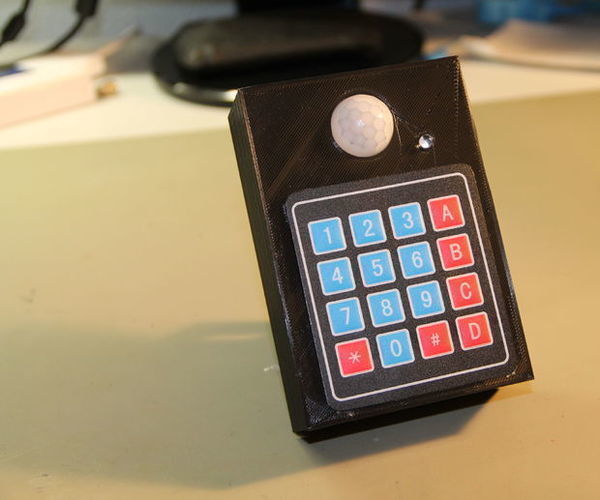
Mail Alarm
"After completing my GSM Home Alarm V1.0 and some time of using, I decided to make some modifications. In the hardware the main changes are the replacement of the ultrasonic sensor and the introduction of a keypad. On the software, I change the SMS notification by e-mail. Also I decided to scale down the circuit and design and 3D print a box for the circuit. " [...]
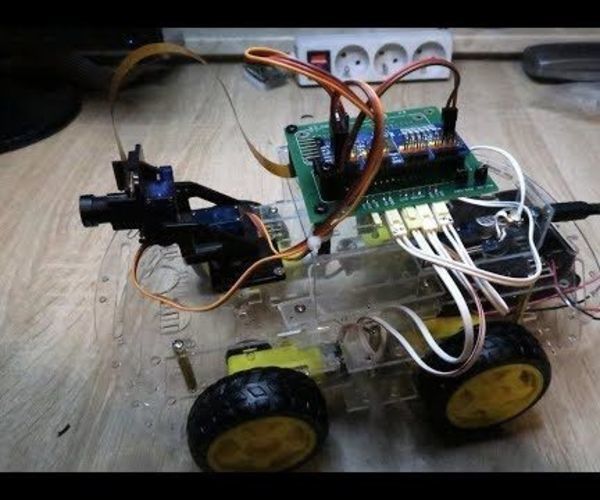
Rasbperrypi Car With Fpv Camera. Control By Web Browser
"We will build 4wd car - the steering will be similar like in a tank - to turn one side of wheels will rotate with different speed than other. At the car will be placed camera on special holder where we can change camera position. The robot will be controlled by web browser (chrome or firefox at desktop, or firefox at mobile phone), at the browser, We will get camera video ( with only 200ms latency), and from the browser, we can control the car movements and camera position. To make communication easier I've used app.remoteme.org system, there is also working out of the box controlling of this kind of car, So You don't have to write Your own code, but of course You can modify scripts add new possibilities etc. Before connecting power to your PCB please double check all connections! " [...]
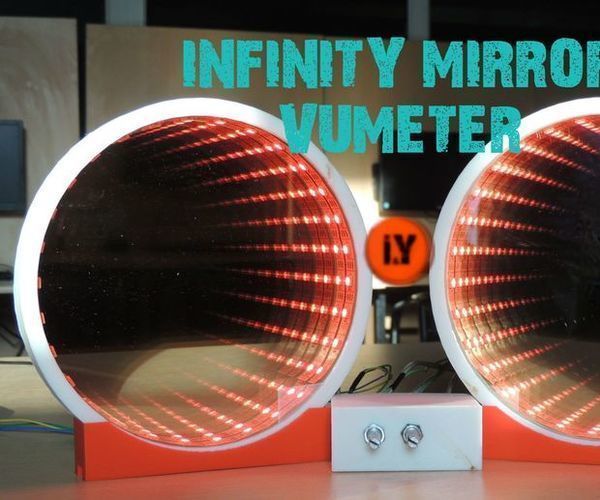
Infinity Mirror Vumeter Music Equalizer
"As Izle ve Yap team, we are doing another DIY project. Infinity Mirror Vu Meter Music Equalizer is inspired by our Infinity Mirror Clock project and we present it to our precious viewers. The Infinity Mirror Vu Meter Music Equalizer, with its spectacular visibility, resolves the signals from your audio system and directs them to the outputs.This ensures that the LEDs on the outputs are lit.In this project, we used LEDs that can be addressed again.We are sure you will appreciate this project, where certain levels are expressed in different colors. " [...]

Arduino Based Cnc Plotter From Old Cd-Rom
"Here I have one more mechanism for you i.e. CNC plotter from old CD rom. Hope you like it. For making the movement of tool along vertical & horizontal path, the stepper motor movable platform is required. For the old cd rom stepper motors are used. Two stepper motor along with the platform are taken out from the cd roms." [...]
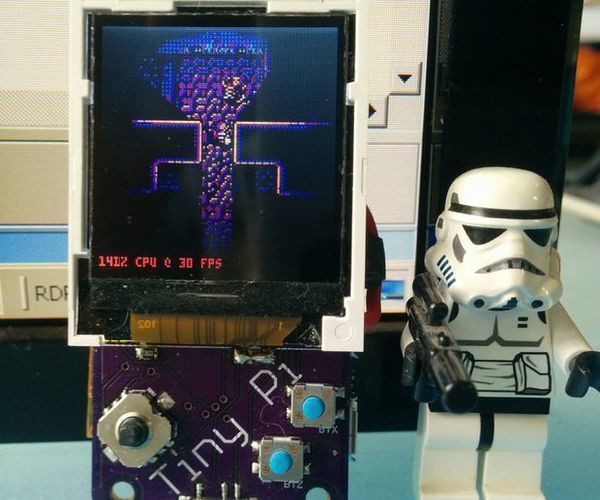
Tinypi - The Worlds Smallest Raspberry Pi Based Gaming Device
"So I have been playing with making custom PCB's for the Raspberry Pi for a while now, and what started as a joke became a challenge to see how small I could go. The TinyPi was born, it is based round a Raspberry Pi Zero, and almost fits within the same footprint. Im pretty sure this is the smallest Raspberry Pi based gaming device in the world, but thats unofficial ;) So lets see what it takes to make a TinyPi..." [...]
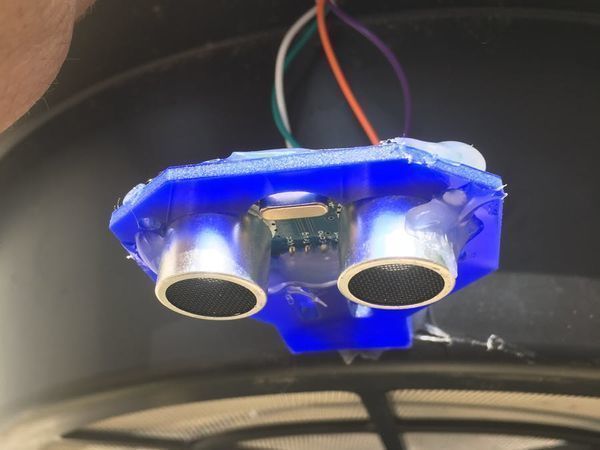
Level Up Project - IoT Your Rain Water Tank
"This project provides the ability to calculate and report the total litres of water within cylindrical water-tank/s The drought that South Africa is facing an in particular the Western Cape has meant that many people have installed rain water tanks to their homes, to supplement their water supply. We (BIGBrave) wanted to do something to help! So using the learnings of our Beverage Insights product and the mad coding skills of one of our resident wizards (GuyDelta) we put together this awesome DIY IoT project with some easily sourced electronics and some free online tools, namely Adafruit IO and Arduino IDE. Adafruit Huzzah ESP8266 with an ultrasonic sensor to measure water tank volumes and connected to an MQTT feed. 1. Goal: This project provides the ability to calculate and report the total litres of water within cylindrical water-tanks, more specifically rainwater tanks connected to a rainfall-gutter-collection system." [...]
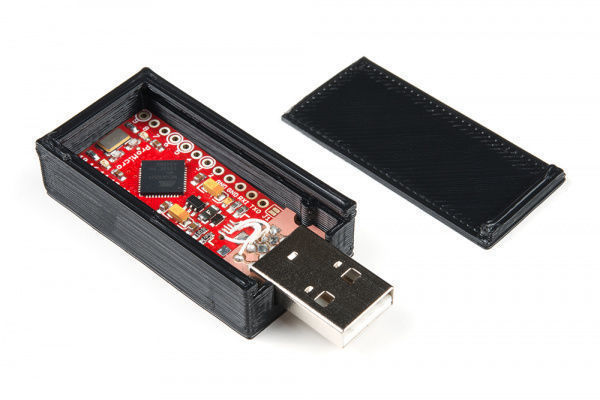
Tech Prank: Hardware Mouse Jiggler
"If you’re looking for a way to prank your friends, coworkers, or classmates, messing with their computer is a sure bet. Changing the background or flipping the screen is so 2003. To help modernize your practical jokes, here is a USB stick that shows up as a regular mouse and moves the pointer around every 10-20 seconds. Perfect for annoying your victims. " [...]
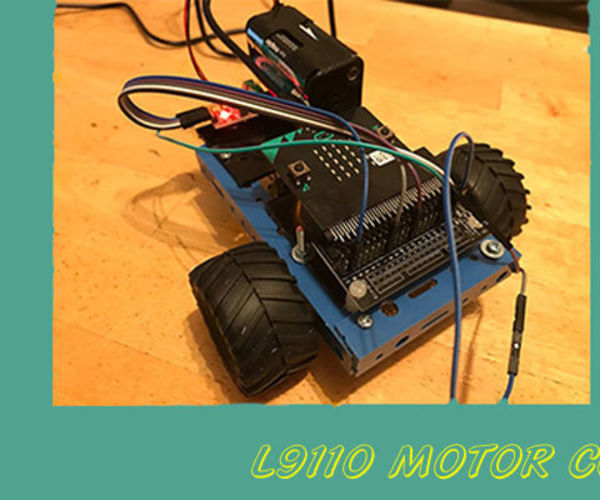
Put Together The Game:Bit!
"Lets figure out where all those screws are supposed to go. " [...]
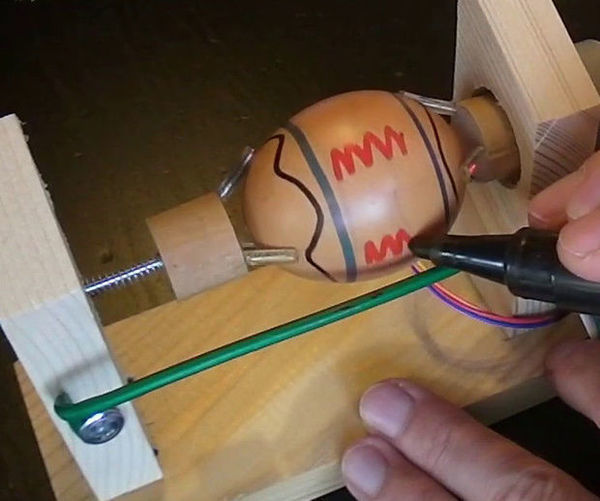
Egg Decorating CNC Lathe (Easy To Build)
"I have seen some very sophisticated egg decorating machines, but all of them needed precise positioning components, so they are not especially easy to build. Further more your creativity is not involved in the painting any more. With my solution you still have the possibility to add your personality to the decoration, and it is also very easy to build. It is basically a lathe, where the rotation is controlled by an exact motor. You hold the pen in your hand, that is the tool for the lathe. You can choose from different rotation patters while you control the pen movement by yourself to preserve the creativity." [...]

BML DC/DC SWITCHER FOR 5V TO 3V AT 750MA IN A TO-220 7805 FOOTPRINT
"This post is an open source hardware design from Black Mesa Labs for a simple DC/DC converter for dropping 5V to 3.3V ( or adjustable to lower voltages via resistor selections ). The design is based on the PAM2305 from Diodes Incorporated, a great little 1 Amp step-down DC-DC converter in a small TSOT25 package. The PAM2305 supports a range of input voltages from 2.5V to 5.5V, allowing the use of a single Li+/Li-polymer cell, multiple Alkaline/NiMH cell, USB, and other standard power sources. The output voltage is adjustable from 0.6V to the input voltage. " [...]

Making Game Console
"Greetings. So i see that i have a tendency to start something, and then take completely different route. This happened with this project as well. I bought nokia 5110 screen a while ago. And as most ebay purchases it was a long time to actually be shipped to me. Meanwhile project for which i needed it fell through." [...]
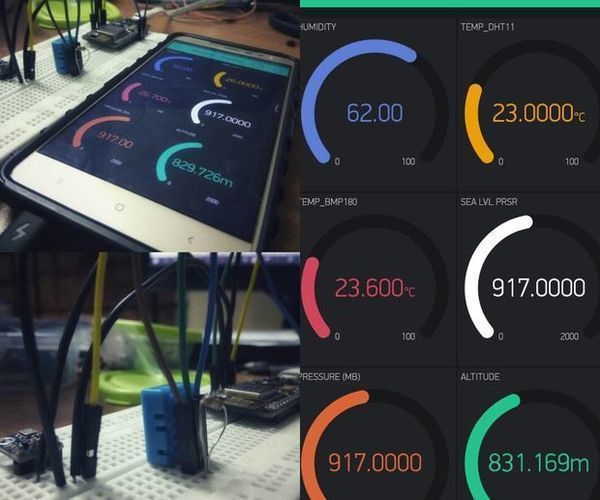
DIY Weather Station Using DHT11, BMP180, NodeMCU Over Blynk Server
"You would have seen Weather Application right? Like, when you open it you get to know the weather conditions like Temperature, Humidity etc. Those readings are the average value of an a big area, so if you want to know the exact parameters related to your room, you can't just rely upon the Weather Application. For this purpose lets move on to the making of Weather Station which is cost effective, and is also reliable and gives us the accurate value. A weather station is a facility with instruments and equipment for measuring atmospheric conditions to provide information for weather forecasts and to study the weather and climate. It requires little bit of effort to plug and code." [...]

Multidruino
"Multidruino is multifunctional arduino based device than can be used as multimeter, game console, components tester, alarm clock, calculator, mini pc, music player and much more. You can use it for making and playing games. You can make little aps like calculator or drawing program. You can coonect various sensors to it. Posibiltieas are great for this little device. you just need idea." [...]
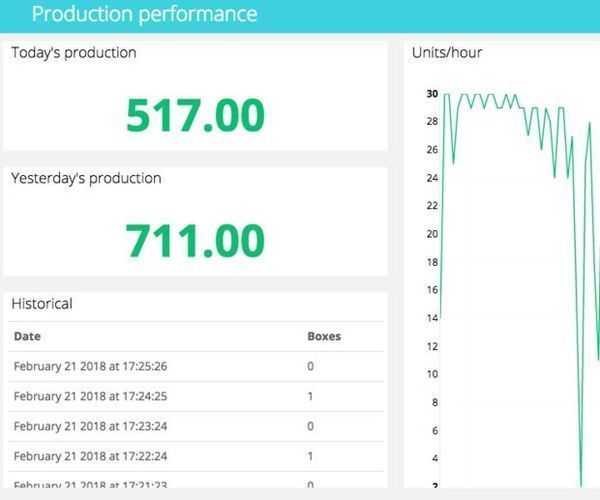
How To Build A Motion Detection System With Arduino
"Build a motion and presence production counter using a Feather HUZZAH programmed with Arduino and powered by Ubidots. Effective physical motion and presence detection in Smart Homes and Smart Manufacturing can be very useful in applications ranging from elderly Ambient Assisted Living (AAL) solutions or a Production Counting System that feeds a larger MES. Other applications for Motion and Presence Detection include but are not limited to: Door and gate automationParking sensors to designate free spots Remote tank level monitoring Smart homes and facilities for lighting and securityUnits detection and counting in conveyor linesMark detection on printed materialsLiquid detection inside cardboard, plastic, and paper tiltsDistance detectionPeople counters While there are many applications for presence and motion, there are equally as many sensors to collect data, such as capacitive, inductive, photoelectric, and ultrasonic sensors. Depending on the costs, environmental conditions, and accuracy requirements, one should select the best fitting hardware for an environment and application requirements. For this tutorial, we will focus on building a real-time production counter; the application will count every unit passing by on a conveyor belt. We will be using the Arduino IDE to program a Feather HUZZAH ESP8266, an ultrasonic sensor, and Ubidots to develop our application and display our IoT dashboard." [...]
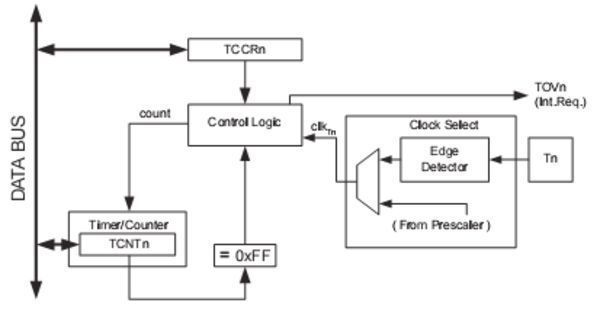
Control AVR 8 bit Timer-Counter0 using AVR-GCC
"Timers are very important part of embedded systems. They make your life much easier if used properly. Timers runs independently to main program flow, so they can do job independently without disturbing precious calculations done by CPU. You just set up the timer and let it run while your main program perform other tasks. Timers are really easy to set up. In this post an example is made for Atmega8 timers." [...]

Online Server Check Portable Alarm (Using Nodemcu Esp8266)
"What server/service down indcator mean to us..? In the online infrastructure world, it's a lot...!! We have to maintain all availability of our service "you don't want to let your service/server down and lose your business" But sometimes puting some people to monitor it is doesn't work well. so we need to improve this mecanism... so i make this device to help warning all the team where ever they are easily. No need computer just plug to the power and it will connect to the AP and warn your team when it needed... This time i will use statuscake.com as example but u can use other than it like pingdom or others..." [...]

Pollu-O-Meter
"ABSTRACT: In the United States, 25 million people in the world have asthma, a respiratory illness, that causes difficulty breathing. This illness can be triggered by many factors such as air quality, pollen, dust, temperature, etc. Once triggered, asthma causes ones throat to close, making breathing difficult and causing that person to become light-headed. The main solution to asthma is an inhaler, prescribed by a doctor; however, inhalers only provide a brief respite and most of the time it is inefficient to wait to use an inhaler until one experiences an asthma attack. How can these life threatening asthma attacks and dilemmas be prevented? The goal of this pollution and environment sensor is assess the asthma patients location and predict if that location can trigger ones asthma before that person experiences the asthma attack." [...]
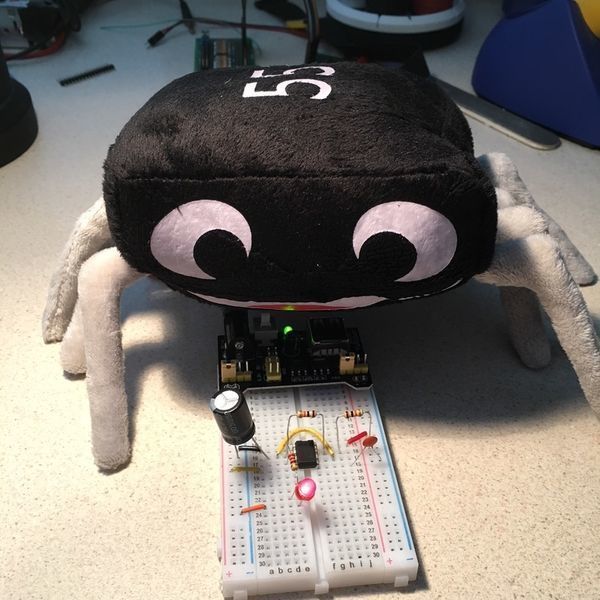
Getting to know the 555
"The 555 was designed back in the early 1970s by Hans Camenzind at the semiconductor company Signetics. It quickly became one of the most popular and used ICs of all time. Data from 2004 shows that it was selling about a billion chips per year and has been used in products ranging from toys to spacecraft. Background by Dave Astels There are a few things we will be talking about in our discussion of the 555 that you might not have run into before. To make sure you all have the background, the next few pages will cover some of the basics. Voltage dividers by Dave Astels Resistors are inserting components." [...]

Magnet Levitation with Arduino
"You can 3D print the body or not. https://www.thingiverse.com/thing:1392023 Easy to print and mount (Just some glue, no screws). Just install the firmware(Levitator.ino) in the arduino board. Do not need a computer, just the 12V power supply, after install the firmware. Use the switches to adjust the permanent magnet position. Use the arduino serial monitor to see the correct value for you." [...]
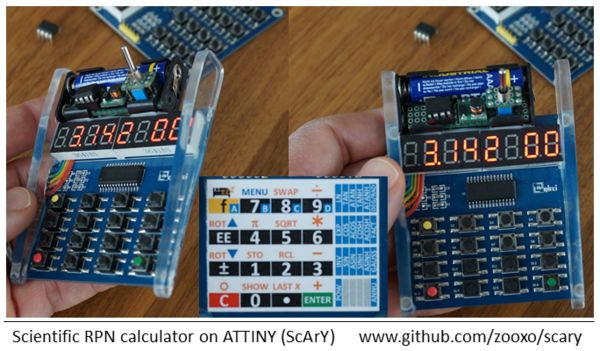
ScArY - Scientific RPN calculator on ATTINY
"ScArY is a scientific RPN calculator on an ATTINY85 and a QYF-TM1638-board (8 digit LED display with 16 buttons controlled with 3 pins). ScArY is capable of familiar functions of RPN calculators (i.e. stack operations) and many mathematical operations (i.e. trigonometic functions) as well as some special functions like calculating annuities or gaussian distributions. Due to the memory restrictions of the ATTINY85 (8 kilobytes) some compromises were made to offer so many functions. So the numbers are shown in SCI notation only (see below)." [...]
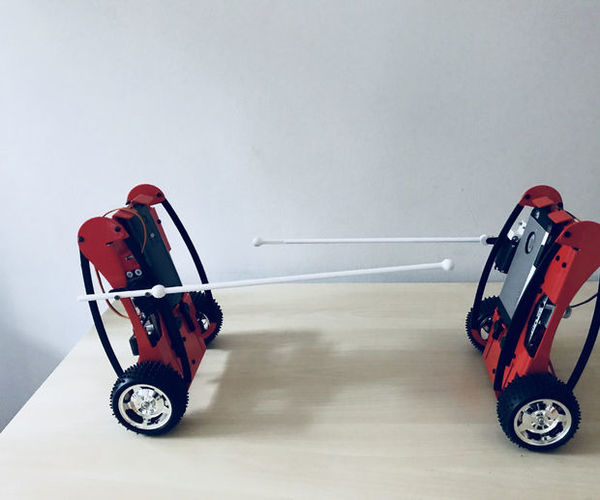
Self-Balancing Robo-Knight
"Video games and board games are great way of spending time with friends and family. Sometimes you feel like spending time offline and putting all of your electronics away, another time you dive into the virtual world of sport, arcade or fighting games. But what if we connected virtual and real world together? I want to present to you the robo-knight - self-balancing telepresence robot with a lance. How does it work? You remotely control your robot and try to make another robot controlled by your friend fall over (yes, using a lance)." [...]
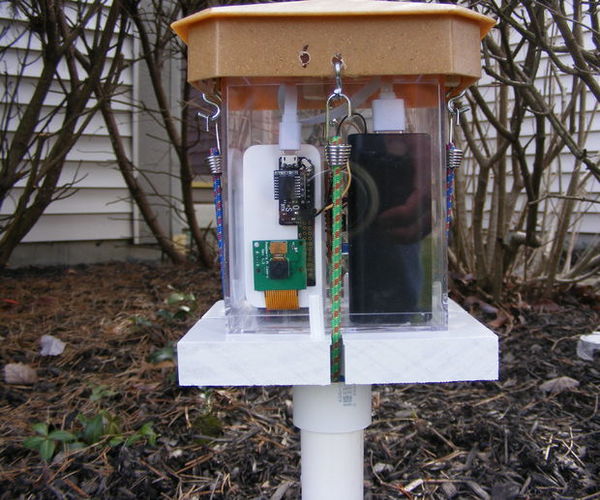
Raspberry Pi In The Wild ! Extended Timelapse With Battery Power
"Motivation: I wanted to use battery powered Raspberry Pi camera to take once-a-day photos outdoors to create long term time-lapse videos. My particular application is to record ground cover plant growth this coming spring and summer. Challenge: Design low current Raspberry Pi power control to ensure long battery life. My Solution: I use a hacked alarm clock, Attiny85 circuit & Pimoroni OnOff shim to completely cut power to Raspberry Pi when not in use. While the Attiny85 and alarm clock continues running in standby mode, current draw is only 5 microAmps. Two AAA batteries power both Attiny and alarm clock, while a USB power bank powers the Pi." [...]

PIC Arduino for Motor Control Projects
"This board created for makers, who want to use various Arduino UNO shields with PIC micro-controllers from Microchip. Board facilitates the use of any 28 PIN DIP PIC microcontroller with or without crystal. Omit Y1 , C9 and C10 in case of internal oscillator . Project can also be used to develop RS485 applications with the help of on board SN75176 IC. Two regulators provide 3.3V and 5V DC outputs. ICSP connector provided to program the PIC IC using PICKIT2/PICKIT3 programmer." [...]

Arduino Pong Clock With Temperature And Timer
"In Pong clock mode the clock uses the classic video game Pong to tell the time The 2 players automatically win and lose so their scores show the hours and minutes. It is based on a clock by Nick Hall. This is the 2nd version of my clock and now displays temperature in slide mode and also has a timer in normal mode. The 1st version can be found here Pong Clock Mk1 instructable The clock has lots of different display modes to choose from: Pong Clock, Large Digits,Time written in words, e.g. Ten Past Twelve, Time and date with seconds,Time and date with seconds and a slide effect, Options-12/24 hour option, Brightness option, Random clock mode option (changes the display mode between Slide with temp and Pong see bottom for details), Daylight saving option to add an extra hour. Push button driven menus for setup & display selection." [...]
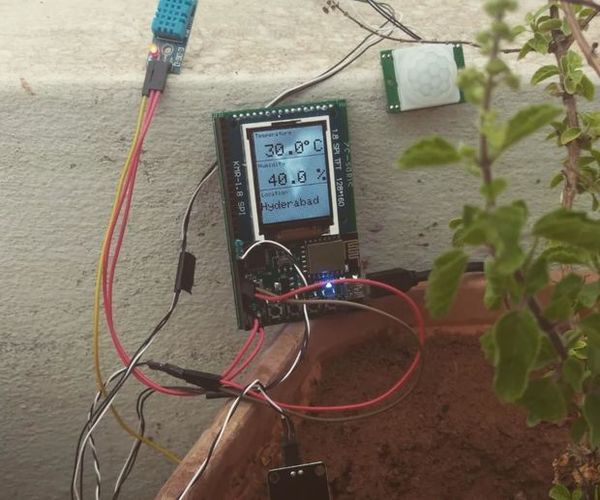
Weather Station Using Single Board - Slabs-32
"In this instructable, we will be making a weather station which measures temperature, air humidity and soil moisture with our SLabs-32 board which also sends this data to the Cayenne cloud for data acquisition. We also simultaneously gets the current weather information from the internet and display it on the TFT screen. All this is done using one single board, which is SLabs-32 an ideal board for IoT-based projects. To get your own SLabs-32 click on the link given below : https://www.fabtolab.com/slabs-32 SLabs-32 has 2 onboard processors which are ESP8266 and Atmega328p. This board combines the high processing capabilities of 32 bit microcontroller L106 and numerous GPIOs available for HMI on the Atmega328p. With I2C as interprocessor communication, Slabs-32 board facilitates a combination of processing power and sufficient GPIOs for all your complex prototyping needs." [...]
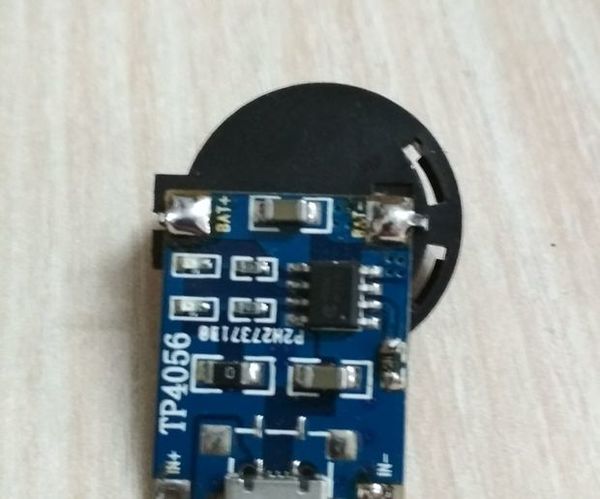
LIR2032 Charger
"LIR 2032 rechargeable coin battery is small in size, can be used in mini Arduino projects and a good replacement for my TV remote In this instructable, I am going to share how I made a charger using TP4056. And I will explain how to limit charging current for any single cell Lithium ion rechargeable batteries " [...]

UltrasonicEyes
"UltrasonicEyes is a fun and quirky project you can place somewhere and watch as it looks at things moving around in front of it. Freaky! I wanted to make a quirky project using some 8x8 matrix LEDs and some ultrasonic sensors... something different from what other people usually make with ultrasonics - and I wanted it to be fun and playful. So I created what I call UltrasonicEyes - a fun project that you sit somewhere near where people move around and it will look around at where people are, and blink and well, just weird you out in a fun and creepy way! What will we need? Ultrasonic sensor modules are designed to detect obstacles and to determine how far away the obstacle is, so they generally have a detection distance of up to 3-4 meters, which is a good distance for this project to be placed inside a living room or office area." [...]

Upcycle A Hard Drive Into A Clock
"My wife's first computer was a PC with a whopping 40 MB hard drive (I'm a Mac guy myself). I have to chuckle at that now because these days storage devices can hold many thousands of times more memory - and my wife can easily fill a 3GB hard drive in just over a year with all our blog photos! If you've ever wondered what you can do with old computer parts, this is the tutorial for you! Just in time for daylight savings time: you can upcycle the hard drive into a one-of-a-kind clock! I originally got the idea from my niece who used to make and sell hard drive clocks for spare pocket change. Her father (my brother) owns a computer repair shop so there were always dead hard drives around that were ripe for the picking." [...]
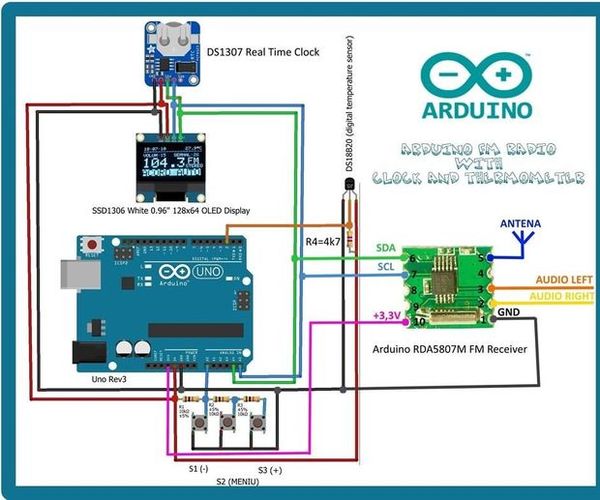
Arduino Fm Radio With Clock And Thermometer
"The FM broadcast band, used for FM broadcast radio by radio stations, differs between different parts of the world. In Europe, Australia[1] and Africa ((defined as International Telecommunication Union (ITU) region 1)), it spans from 87.5 to 108 megahertz (MHz) - also known as VHF Band II - while in the Americas (ITU region 2) it ranges from 88 to 108 MHz. The FM broadcast band in Japan uses 76 to 95 MHz. The International Radio and Television Organisation (OIRT) band in Eastern Europe is from 65.8 to 74.0 MHz, although these countries now primarily use the 87.5 to 108 MHz band, as in the case of Russia. Some other countries have already discontinued the OIRT band and have changed to the 87.5 to 108 MHz band.Frequency modulation radio originated in the United States during the 1930s; the system was developed by the American electrical engineer Edwin Howard Armstrong. However, FM broadcasting did not become widespread, even in North America, until the 1960s." [...]

Air Quality Analyzer
"Analyses home air quality and records the values in a SD card. The quality of the air that we breathe, is very important to our health. This device analyses the air quality inside our homes, and records the values in a SD card. By analyzing the stored values, we know how the evolution of the parameters thru time was. I will use temperature, humidity and air quality sensors that are cheap enough to use in this kind of project, without sacrificing too much the precision. The main idea behind this project is to know if the air is breathable or not." [...]
That's all Folks!


